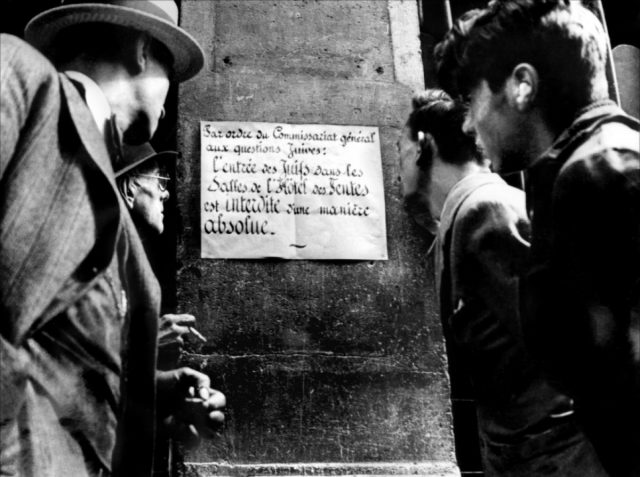Criterion Prediction #193: The Sorrow and the Pity, by Alexander Miller

Title: The Sorrow and the Pity
Year: 1969
Director: Marcel Ophüls
Cast: Jacques Duclos, Anthony Eden, Georges Bidault, Matthäus Bleibinger
Synopsis: A detailed chronicle consisting of stock footage and interviews with individuals who were on the different sides of France during the German occupation, from resistance fighters to collaborators to German officers.
Critique: After seeing the film in its entirety, I’d say that Shoah is the most, timeless, comprehensive, detailed, earnest, and historically accurate documentary/screen exploration of the Holocaust ever made. Those who have seen Claude Lanzmann’s enduring 1985 feature would likely agree. So when we reach another vital summit in the multifaceted subject of WWII, it feels like no other film is as qualified as The Sorrow and the Pity to stand as the authority on the machinations of occupied France. It’s a unique placeholder and, given the specificity of the subject, it might look like a wins-by-default scenario but if you look at 1999’s Hidden Heroes and Claude Chabrol’s (very potent) Eye of Vichy, there’s nothing quite like The Sorrow and the Pity. Contextually and structurally, Ophüls’ unassuming lensing of France’s tumultuous history during the German occupation is as stirring as it is curious and illuminating. There’s a genuine sense of discovery at work. Ophüls gives relative credence to both resistance fighters and collaborators, as well as interviewing military brass from Britain, France and Germany alike. While there are many writings regarding this period in history, here we see it recounted by those who were active in nearly every moving part of the country throughout the years of its most contentious period. The Sorrow and the Pity provides an answer to the broad questions that arise when the subject of war comes to mind, the proverbial “whys?” and “hows?”. Plain-spoken words issue from the people, whether they be provincial farmers who were active resistance fighters, tradespeople who identified as fascist, socialist or communist or the many who did whatever they could merely as a survival mechanism. The function that is the most stirring is that, at the time, no one really knew the exact ramifications of Germany’s military or the Nazi party during the occupation. It’s easy now, knowing the horrors of Nazism, to cast judgment but in looking at a country and its citizens in the throes of such a pivotal and dangerous transition, Ophüls provides some crucial context for exploring their actions and reactions.
Most memorable are the seemingly expendable details, personal anecdotes that are so indelibly unique that they almost outshine the eye-opening confessions throughout; giving a wink to a baker to get more bread rations, sharing cigarettes with fellow comrades in the underground or hoarding batches of wine from German soldiers.
With the integration of stock footage, propaganda films (footage from the infamous Jud Süß is used to significant effect) and newsreels, The Sorrow and the Pity becomes a transformative and multifaceted document.
Why It Belongs in the Collection: There are many overlapping movies between Arrow Video and The Criterion Collection (Being John Malkovich, Eight Hours Don’t Make a Day, Bicycle Thieves, Dekalog) and especially those that receive a Region B release tend to get the Criterion treatment shortly afterward. As of now, The Sorrow and the Pity is available on Blu-ray thanks to Arrow and with rumors aflutter that Ophüls’ classic seems primed for a spine number.
Note: Yes, many of us heard about The Sorrow and the Pity thanks to Woody Allen referencing it in Annie Hall and I’m not going to lie and say that that wasn’t the case for me.



























